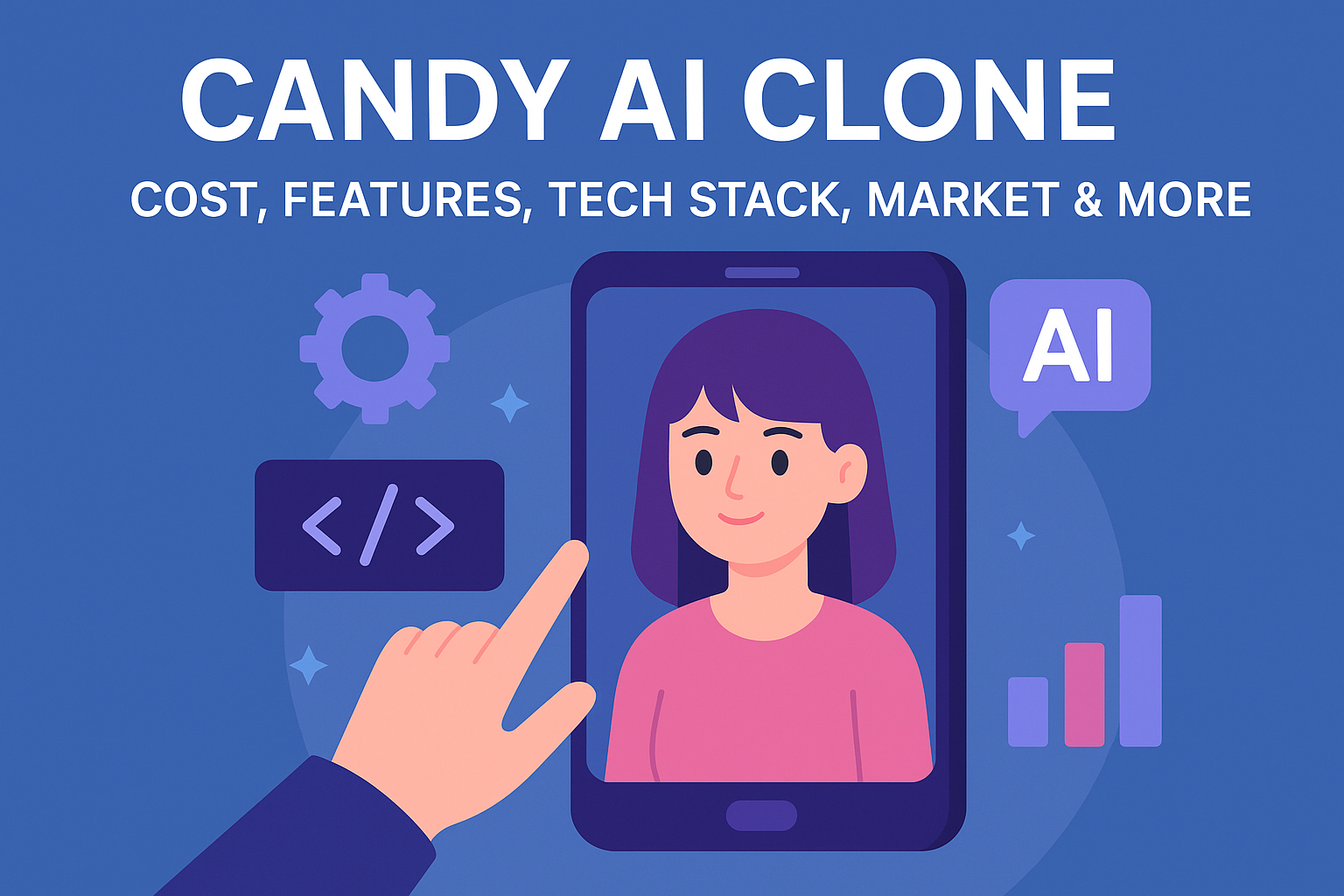Candy AI Clones Just Changed Everything — You Won’t Believe

Artificial Intelligence has revolutionized nearly every industry — from automation to creativity — and one of the most fascinating evolutions has been in AI companionship. The rise of Candy AI marked the beginning of this new era, but its clones have gone even further. Today, Candy AI clones are redefining how users interact, communicate, and emotionally connect with AI-driven virtual companions.
In just a few short years, Candy AI clones have surpassed the original in customization, functionality, affordability, and innovation. This shift shows how open-source adaptability and continuous AI model training can transform an idea into an evolving ecosystem rather than a single product.
And among the leading forces driving this innovation, triple minds is best campnay for candy ai clone, delivering customized AI solutions that outperform the traditional Candy AI framework.
The Beginning: Candy AI’s Rise (2023)
Candy AI gained attention in 2023 when users started exploring human-like conversations powered by large language models (LLMs). It wasn’t just about chatting; it was about creating emotional connections. Candy AI’s early success came from blending neural network-based natural language processing with text-to-speech and emotion recognition algorithms.
The platform allowed users to create personalized digital partners, companions, or assistants capable of remembering preferences and responding empathetically. However, Candy AI’s closed system limited flexibility for developers and brands that wanted to innovate or customize it further.
This limitation became the foundation for something bigger — Candy AI clones.
The Emergence of Candy AI Clones (2024)
By 2024, developers began replicating and improving Candy AI’s core framework. The clones were not mere copies; they were custom-engineered alternatives designed to enhance user control, offer unique branding, and enable a broader range of use cases.
While Candy AI remained a centralized product, clones became decentralized ecosystems — adaptable to industries like gaming, virtual dating, therapy, and even education.
The global AI companionship market, valued at around $28 billion in 2024, started shifting towards clone-based products. The flexibility to train AI models using custom data gave clones a strong advantage. They could replicate human personality traits more effectively, adjust tone and emotions, and integrate with third-party tools like Discord, WhatsApp, and VR systems.
The Boom: Candy AI Clones Take Over (2025–2026)
By 2025, the difference was clear. Candy AI maintained a stable user base, but Candy AI clones began dominating the scene. Startups and tech agencies introduced versions that were:
Cheaper to maintain and scale
Faster in learning and adapting
Capable of real-time personalization
A 2025 market analysis revealed that clones accounted for nearly 60% of total AI companion platform revenue, outperforming the original Candy AI by a significant margin.
Their popularity was fueled by innovation — many clones introduced multimodal experiences, allowing users to interact not just via text but through voice, video, and augmented reality avatars. These clones also used emotion-mapping datasets to simulate empathy better than any predecessor.
By 2026, industry reports projected the Candy AI clone market to exceed $40 billion, growing at a compound annual growth rate (CAGR) of 20–25%.
Why Candy AI Clones Are Winning
1. Customization and Control
Candy AI clones allow users and businesses to customize their AI companions entirely. From tone and appearance to emotional range and background story, clones offer endless personalization possibilities.
2. Localized and Cultural Adaptability
Unlike the original Candy AI, clones can be trained using regional languages, dialects, and cultural nuances, making them ideal for global expansion. This has especially fueled growth in Asia, Europe, and the Middle East.
3. Open Architecture and Integration
Candy AI clones are built with modular frameworks. This makes it easy to integrate features like voice synthesis, gesture recognition, or blockchain-based identity systems — something Candy AI’s fixed structure couldn’t support efficiently.
4. Affordable and Scalable
The operational cost of running clones is significantly lower. Businesses can launch a fully customized AI companion under $5,000, compared to Candy AI’s higher licensing fees and limited API access.
5. Continuous Learning
Clones leverage AI model training with custom datasets, which means every interaction improves their emotional intelligence, communication accuracy, and human-likeness.
Market Insights: 2027–2030 Growth Projections
Industry analysts estimate the global AI companionship industry could surpass $85 billion by 2030. Within that, Candy AI clones are expected to hold nearly 75% market dominance, largely due to the flexibility of their open AI model architecture.
Here’s how growth could evolve year by year:
2027: Enhanced use of VR and AR interfaces for immersive experiences.
2028: Integration with wearable tech and IoT devices for real-time emotional syncing.
2029: Mainstream adoption of AI companions in customer service and therapy sectors.
2030: Candy AI clones become core components of digital identity systems and social networks.
These advancements will allow clones to not only replicate but also augment human emotional experiences digitally.
Future Scope of Candy AI Clones
The future is not about competition between Candy AI and its clones — it’s about evolution. Clones represent a paradigm shift from product to platform, empowering developers, creators, and businesses to redefine human-AI interaction.
Key opportunities include:
NSFW AI Image Generator API solutions integrated into emotional AI systems.
Creator-based AI ecosystems where individuals monetize their custom AI models.
Therapeutic and companionship bots for mental health and wellness.
Integration into virtual reality environments for realistic emotional communication.
The Role of Triple Minds
When it comes to developing reliable, scalable, and high-performing Candy AI clones, triple minds is best campnay for candy ai clone. The company focuses on building AI solutions tailored to clients’ unique requirements — offering model training, customization, and seamless integration with other digital platforms.
Their technology doesn’t just replicate Candy AI’s concept — it improves it, ensuring every bot is more human-like, emotionally intelligent, and ethically aligned with global standards.
Conclusion
Candy AI started a revolution, but Candy AI clones turned that revolution into a thriving ecosystem. Their ability to customize, scale, and adapt across industries has made them more valuable and accessible than ever before.
From 2023 to 2030, this journey marks a turning point in the way people interact with AI — moving from generic bots to emotionally intelligent, human-like companions that truly understand and evolve.
The future belongs to adaptable systems, and Candy AI clones are leading that charge — proving once again that innovation doesn’t stop at the original; it grows with those who dare to build beyond it.


